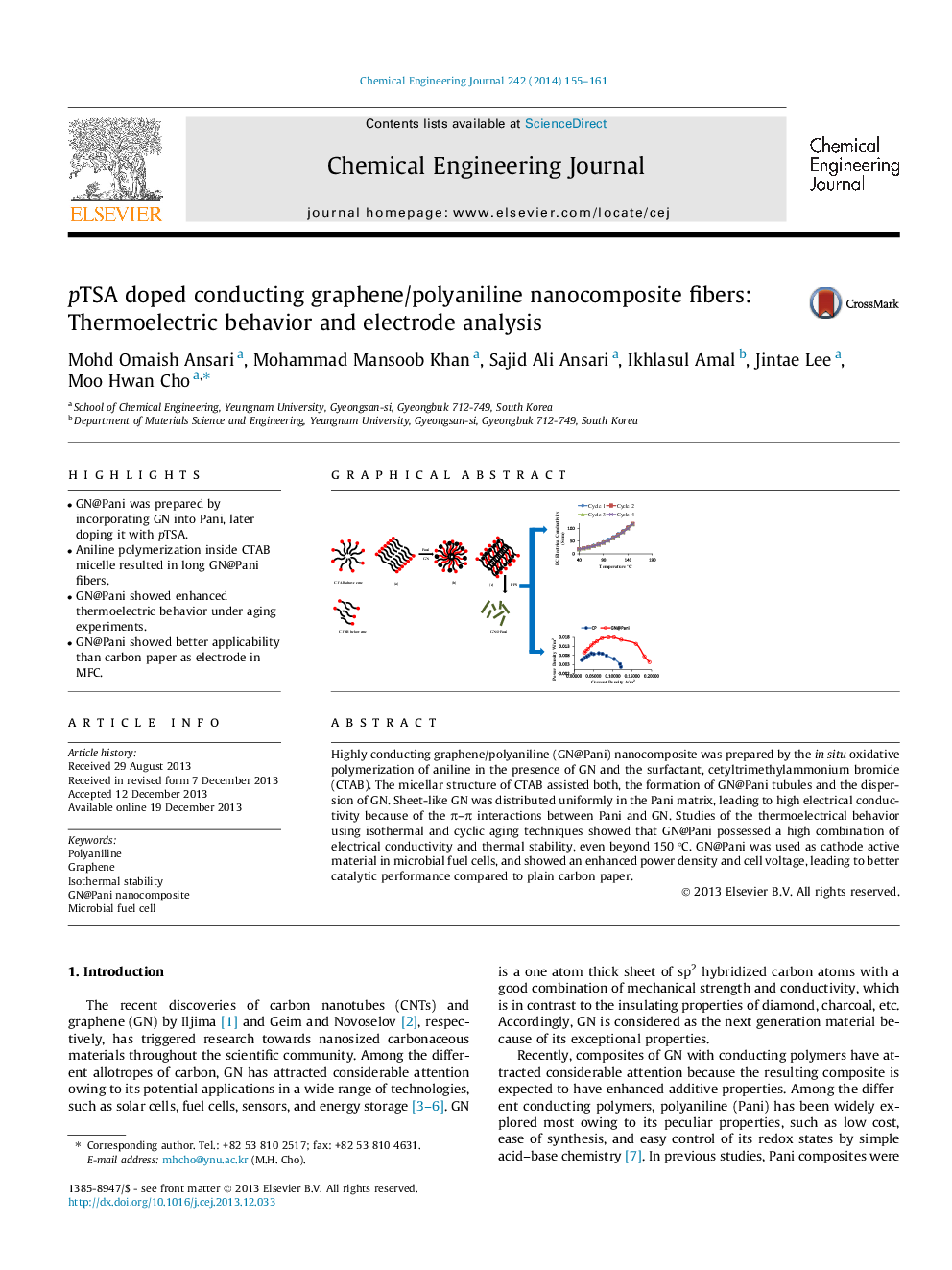| Article ID | Journal | Published Year | Pages | File Type |
|---|---|---|---|---|
| 147661 | Chemical Engineering Journal | 2014 | 7 Pages |
•GN@Pani was prepared by incorporating GN into Pani, later doping it with pTSA.•Aniline polymerization inside CTAB micelle resulted in long GN@Pani fibers.•GN@Pani showed enhanced thermoelectric behavior under aging experiments.•GN@Pani showed better applicability than carbon paper as electrode in MFC.
Highly conducting graphene/polyaniline (GN@Pani) nanocomposite was prepared by the in situ oxidative polymerization of aniline in the presence of GN and the surfactant, cetyltrimethylammonium bromide (CTAB). The micellar structure of CTAB assisted both, the formation of GN@Pani tubules and the dispersion of GN. Sheet-like GN was distributed uniformly in the Pani matrix, leading to high electrical conductivity because of the π–π interactions between Pani and GN. Studies of the thermoelectrical behavior using isothermal and cyclic aging techniques showed that GN@Pani possessed a high combination of electrical conductivity and thermal stability, even beyond 150 °C. GN@Pani was used as cathode active material in microbial fuel cells, and showed an enhanced power density and cell voltage, leading to better catalytic performance compared to plain carbon paper.
Graphical abstractFigure optionsDownload full-size imageDownload as PowerPoint slide
